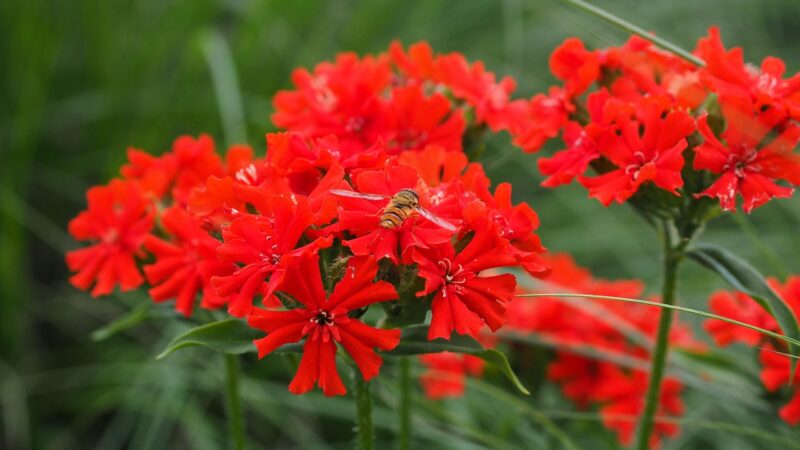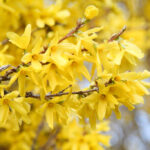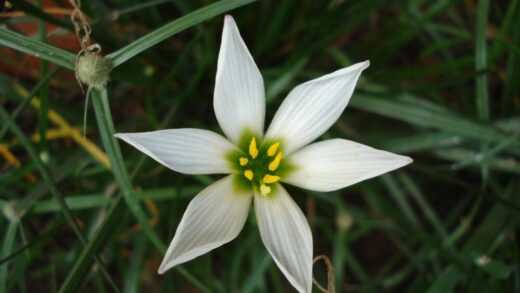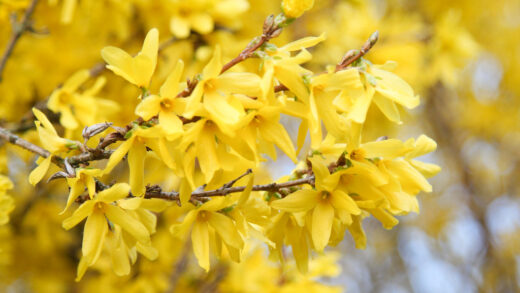Watering and fertilizing of Maltese cross

Proper watering and fertilizing practices are crucial for cultivating a healthy and vibrant Maltese cross, yet this resilient perennial is notably forgiving, preferring a lean approach over excessive pampering. Understanding the delicate balance of providing adequate moisture without creating waterlogged conditions is key to preventing root diseases and ensuring long-term success. Similarly, a modest fertilization strategy will promote a profusion of its signature scarlet blooms without encouraging weak, leggy growth. By mastering these two fundamental aspects of its care, you can ensure your plant remains a stunning, low-maintenance centerpiece in your garden for years to come.
Establishing watering needs
For a newly planted Maltese cross, consistent moisture is the most critical factor for successful establishment. During the first few weeks to a month after planting, the soil should be kept evenly moist to encourage the development of a deep and extensive root system. This initial period is when the plant is most vulnerable to drought stress, as its roots have not yet grown far enough into the surrounding soil to access deeper moisture reserves. Watering thoroughly once or twice a week, depending on your climate and soil type, is generally sufficient. The goal is to moisten the entire root zone, not just the surface of the soil.
Once the Maltese cross has survived its first growing season and is considered established, its watering requirements change dramatically. It becomes remarkably drought-tolerant, a characteristic that makes it an excellent choice for xeriscaping or for gardeners in drier climates. An established plant can typically thrive on natural rainfall alone in many regions. Supplemental watering is generally only necessary during extended periods of drought, extreme heat, or if the plant is grown in particularly sandy, fast-draining soil. Overwatering is a far greater threat to an established plant than underwatering.
The best way to determine if your established plant needs water is to check the soil itself. Use your finger or a trowel to check the moisture level a few inches below the surface. If the soil feels dry at this depth, it is time to provide a deep and thorough soaking. This method of deep but infrequent watering encourages the roots to grow further down into the soil in search of water, which ultimately makes the plant even more resilient and self-sufficient. This watering philosophy is far superior to frequent, shallow applications of water, which can lead to a weak and shallow root system that is more susceptible to drought.
It is also important to consider the plant’s location and the time of day when watering. Always apply water directly to the soil at the base of the plant, using a soaker hose, drip irrigation, or a watering can. Avoid overhead watering, as wet foliage, especially in humid conditions or overnight, can promote the development of fungal diseases like powdery mildew. Watering in the early morning is the most efficient time, as it allows the plant to absorb the moisture before the heat of the day and minimizes water loss to evaporation, ensuring that the water gets to where it is needed most—the roots.
More articles on this topic
Recognizing signs of improper watering
Learning to read the signals your Maltese cross sends is an essential skill for proper water management. The most obvious sign of underwatering is wilting. The leaves and stems will lose their turgidity and begin to droop, particularly during the hottest part of the day. While the plant is quite resilient and can often bounce back after a good drink, repeated wilting places the plant under significant stress, which can reduce its overall vigor and flowering potential. Other signs of a plant that is too dry include crispy or browning leaf edges and a general lack of new growth.
Conversely, the signs of overwatering can sometimes be more subtle but are far more dangerous to the long-term health of the plant. One of the primary symptoms of excessive moisture is yellowing leaves, particularly the lower ones. This occurs because the waterlogged soil deprives the roots of oxygen, causing them to suffocate and begin to rot. As the root system becomes compromised, it is unable to take up water and nutrients effectively, leading to a plant that appears to be wilting and suffering from nutrient deficiencies, even though it is sitting in wet soil.
Root rot is the most severe consequence of overwatering. This fungal disease thrives in anaerobic, waterlogged conditions and will cause the roots to turn brown, soft, and mushy. A plant suffering from advanced root rot will exhibit stunted growth, widespread yellowing, and will eventually die. Unfortunately, once root rot has taken hold, it is very difficult to reverse. This is why prevention, through the provision of well-drained soil and careful watering practices, is absolutely critical. It underscores the importance of never allowing the Maltese cross to sit in standing water.
To avoid these issues, always err on the side of caution and allow the soil to dry out partially between waterings. Pay close attention to both the plant and the soil. If the leaves are a healthy green and the stems are firm, the plant is likely content with its moisture levels. If you are unsure, the soil test is the most reliable indicator; if the top few inches are dry, it is safe to water, but if you feel moisture, it is best to wait another day or two before checking again. This mindful approach will help you maintain the perfect moisture balance for your plant.
More articles on this topic
A conservative approach to fertilization
The Maltese cross is a perennial that truly embodies the principle that “less is more” when it comes to feeding. It is not a heavy feeder and is perfectly content in soil of average fertility. In fact, providing it with too many nutrients, particularly nitrogen, can be counterproductive. Excess nitrogen encourages the plant to produce an abundance of lush, soft foliage at the expense of its brilliant flowers. This can also lead to weak, elongated stems that are unable to support the weight of the flower heads, causing the plant to flop over and require staking.
For most garden situations, a single application of fertilizer in the spring is more than sufficient for the entire growing season. One of the best ways to provide this is by top-dressing the soil around the plant with a one or two-inch layer of well-rotted compost. This organic approach provides a slow, gentle release of a wide range of nutrients and has the added benefit of improving the soil’s structure and water-holding capacity. Applying this compost in early spring as new growth emerges will support the plant’s development throughout the season without overwhelming it.
If you choose to use a commercial granular fertilizer, select a balanced, all-purpose formula, such as a 10-10-10, or one specifically designed for flowering perennials. Avoid high-nitrogen lawn fertilizers at all costs. Apply the fertilizer according to the package directions, sprinkling it on the soil around the base of the plant and gently scratching it into the surface. It is important to water the area well after application to help the nutrients dissolve and become available to the plant’s roots. This one spring feeding should be all the plant requires.
It is generally unnecessary and potentially harmful to fertilize the Maltese cross later in the season. Applying fertilizer in the summer can promote a new flush of tender growth late in the year that may not have sufficient time to harden off before the first frost, making it susceptible to winter damage. The only exception might be for plants grown in very poor, sandy soil or in containers, where nutrients can leach out more quickly. In these cases, a half-strength dose of a liquid balanced fertilizer once or twice during the blooming period may be beneficial, but for most garden plants, the single spring application is the ideal approach.
Fertilizing in different soil types
The specific fertilizing strategy for your Maltese cross should be adapted to your garden’s soil type. If you are fortunate enough to have a rich, loamy soil that is naturally high in organic matter, you may not need to add any supplemental fertilizer at all. Loamy soils have an excellent balance of nutrient retention and drainage, providing an ideal environment for this plant. In this case, simply mulching with organic material like compost or leaf mold annually will be sufficient to replenish any nutrients the plant uses throughout the season.
For gardens with heavy clay soil, the focus should be as much on improving the soil structure as it is on providing nutrients. While clay soil is often nutrient-rich, its dense, compacted nature can make it difficult for roots to access those nutrients and can lead to waterlogging. When preparing a bed in clay soil, incorporating large amounts of compost, grit, and other organic matter is essential. The annual spring top-dressing of compost will not only provide a slow-release source of nutrients but will also continue to improve the soil’s texture and drainage over time.
In contrast, sandy soils present the opposite challenge. They have excellent drainage but are often low in nutrients and have a poor capacity for holding onto them. Water-soluble nutrients tend to leach through sandy soil quickly, especially with heavy rainfall or irrigation. For Maltese cross planted in sandy soil, a slow-release granular fertilizer applied in the spring is a particularly good choice, as it will provide a steady supply of nutrients over a longer period. Additionally, amending the soil generously with compost and other organic matter is crucial for improving its ability to retain both water and nutrients.
Plants grown in containers have unique fertilization needs because they are in a closed system with a limited volume of soil. The potting mix will contain a finite amount of nutrients, and frequent watering can leach these nutrients out of the pot over time. For container-grown Maltese cross, it is advisable to use a potting mix that incorporates a slow-release fertilizer. In addition, you may need to provide supplemental feeding with a diluted, balanced liquid fertilizer every four to six weeks during the active growing and blooming season to ensure the plant has the resources it needs to thrive.
Organic feeding options
For the environmentally conscious gardener, there are numerous excellent organic options for fertilizing the Maltese cross that are both effective and beneficial for the overall health of the garden soil. The cornerstone of any organic feeding program is compost. This “black gold” is teeming with microbial life and provides a full spectrum of macro and micronutrients in a slow-release form that is readily available to plants. Applying a generous layer of compost as a top-dressing each spring is often the only fertilization this unfussy perennial will ever need.
Well-rotted animal manures, such as those from cows, horses, or chickens, are another superb source of organic nutrients. It is crucial that the manure is fully composted or aged before application, as fresh manure is too high in nitrogen and can burn plant roots. Composted manure can be worked into the soil before planting or used as a top-dressing in the spring. It not only feeds the plant but also adds valuable organic matter to the soil, improving its structure, aeration, and water retention.
Liquid organic fertilizers can be useful for providing a quick nutrient boost, particularly for container plants or if a deficiency is suspected. Options like compost tea, fish emulsion, and liquid seaweed are excellent choices. These are typically diluted with water and applied to the soil around the base of the plant. Fish emulsion is a good source of nitrogen, while liquid seaweed provides a wealth of trace minerals and growth hormones that can enhance plant vigor. These liquid feeds can be applied once or twice during the growing season if the plant appears to need it.
Other organic amendments can also contribute to the long-term fertility of the soil. Bone meal is a great organic source of phosphorus, which is essential for strong root development and flower production. It can be added to the planting hole when you first install the plant. Alfalfa meal is another excellent soil conditioner and fertilizer, providing a good balance of nutrients and growth-promoting compounds. By focusing on feeding the soil with these organic materials, you create a healthy, living soil ecosystem that will, in turn, support a robust and beautiful Maltese cross.

















